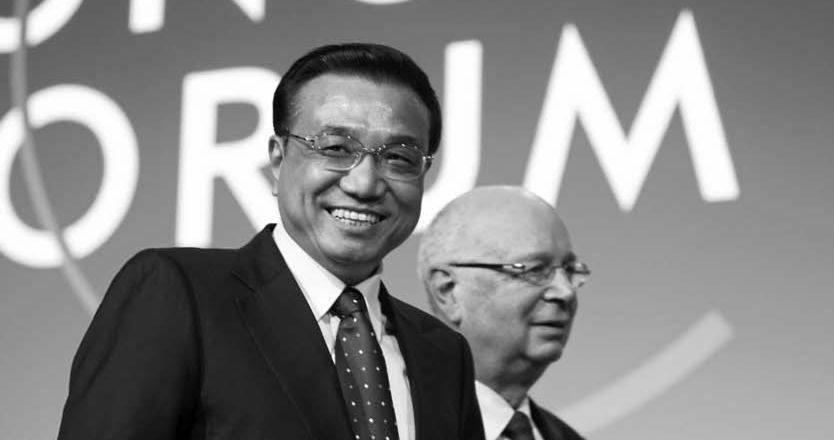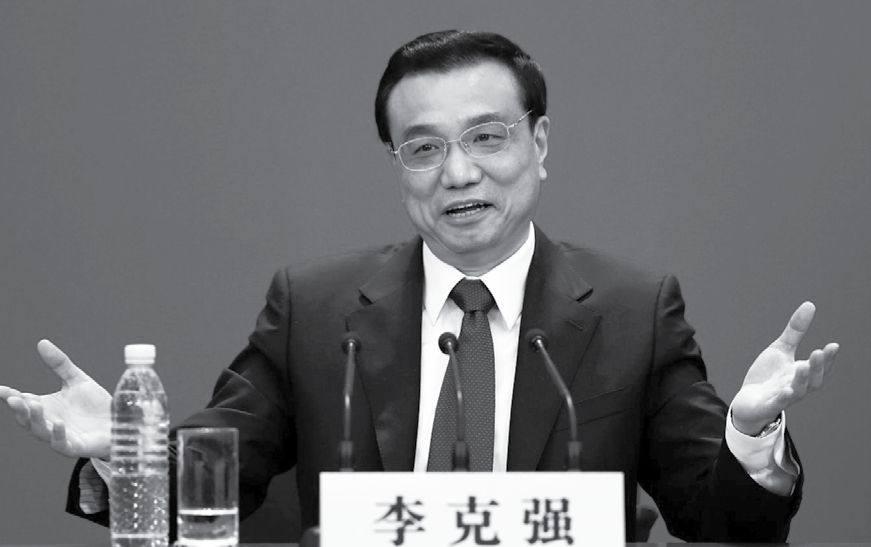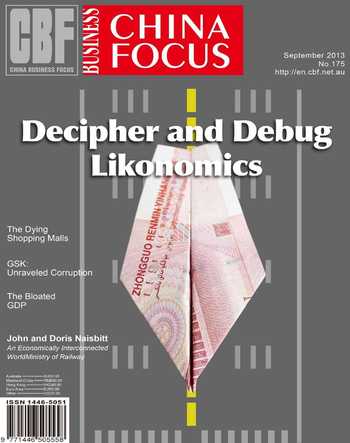Decipher and Debug Likonomics
The western media is ad- dicted to creating new economic terms to define the economic policy of different countries. After “Abeconomics”, they also created the “Likonomics”.
These two terms were used for the strongest economies in Asia, Japan and China. These two economic theories share one feature – they are both proposed by their prime ministers – Shinzo Abe and Li Keiqiang – or the summary of their economic ideas.
But their similarity ends here. Abes economic theory, termed “Abeconomics”, refers to the massive economic stimulus packages featuring the easy monetary policy, which has led to the fast depreciation of Japanese yen.
In comparison, the Likonomics targets Chinas current economic problems and focuses on the sustainable economic development of China. Generally speaking, the Likonomics speaks of exchanging the short-term loss and pain for the long-term development and prosperity.
The term Likonomics was initially put forward by Barclays. It quoted Li Keqiang that the “hand that controls the economic development was previously wrongly connected to the government, but now it needs to be returned to the market”. Barclays forecasted that Li Keqiangs economic policies will make the Chinese economy suffer a“temporary hard landing”.
“In the next three years, Chinas quarterly economic growth rate will be lowered to 3%. And then it will return to the current level and remain the 6%-8% economic growth rate in the following 10 years,” Barclays report said.
The British investment bank also emphasized that the decision-makers of China would not take radical financial and monetary policies unless its economy and market face the danger of breakdown.
The Source of Likonomics
Li Keqiang was elected Chinas premier on March 15, 2013. After taking over the State Council of China, Li Keqiang, who claimed to study the Western Economics when he was a freshman in Beijing University, began a series of new economic policies, hoping to reshape the economic structure of China and deal with the economic problems.
Li Keqiang kept saying that the boundary between the government and the market should be made clear – actually, his predecessors and officemates in the ruling class of China kept saying that and had made some attempts.
But Li Keqing has seen the deficiency of the excessive governmental intervention and its defect. Nobody could deny the great achievements China made in the economic development in the past 30 years, yet problems– many of them – are still lingering and even getting stronger. The international financial crisis made things worse. The roaring housing price, the increasing CPI, the intensive economic development that consumed a lot of energy and resources… all these things pose a threat to the long-term prosperity and stability of the second largest economy in the world.
Li Keqiang has sensed the threat and wanted to end it.
So, here comes the Likonomics. According to Barclays, the Likonomics has three main contents: no stimulus packages, de-leveraging and structural reform.
“In the past three months, the new government of China resisted the continuous call of the new economic stimulus package,” Barclays reported. In its opinion, the investment driven by the government is no longer sustainable. The Chinese leaders have already started to reorganize the credit market and the shadow banking business to prevent the formation of bubbles.
Barclays pointed that the total credit amount in China has increased from US$9 trillion in 2008 to US$23 trillion at the beginning of 2013. The increase of credit amount is almost twice as fast as the GDP growth in China.
Anthony Jenkins, CEO of Barclays, said on July 2 that the decision- makers of China have already realized the importance of avoiding the banking industry and are trying to keep the financial risk at bay. Though the Chinese economy might suffer slowed growth caused by the structural change, it will return to and sustain the upward trend following the Likonomics.
“In my opinion, the Chinese government has already kept the situation under control,” Jenkins said in front of the journalist from Xinhua News Agen- cy. Recently, there was a strained interbanking capital flow among the Chinese banks. Jenkins believed the temporary flow risk to be a result of “the managements hope of carefully de-leveraging the banking system”.
The Bubble Destroyer
One thing Jenkins referred to was also a hot topic in July, when various reports said that several banks in Shanghai could not find enough capital for the daily operation.
Even though there is no official confirmation about the “money shortage” of banks, all reports told the same story. The banks, which lent a lot of loans, found no money in their treasuries. They turned to the central bank for help, expecting the cash to be delivered to them quickly and easily, as they did ever before.
However, things became different this time. The central bank rejected their appeal and sent no money for at least three days. The banks in short of money had no way but to borrow money from the banks that temporarily had no such a problem.
It was reported that Li Keqiang was the one requiring the central bank not to give money to commercial banks. As for the reason, though nobody talked about it, speculations thought it a warning from the premier, who wanted the banks to be cautious about the credit bubble.
Yes, the bubbles have been considered a great enemy for the Chinese economy and Premier Li Keqiang wanted bubbles destroyed for long. The new government led by him and President Xi Jinping started their governance with the restrictions of the luxurious dinners of governmental officials. This is a good method, not only for reducing the corruption and related complaints, but also to break the bubbles at the dinner table.
This is only the start. The bigger and more terrible bubbles were found in the property market, the capital market and the governmental debts.
Wang Lina, a fellow at the Chinese Academy of Social Sciences, has been studying the property bubbles in the third- and fourth-tier cities. The property bubbles have already been reflected by many “ghost cities”, which host a lot of buildings without any people.
The “ghost cities” were caused by local governments and property developers. At the beginning of 2013, a businessman named Yan Jiehe spent half a year flattening 700 barren hills in Lanzhou and declared about the investment of RMB 20 billion in building a“new Lanzhou”.
Geng Yanbo, Mayor of Datong City, Shaanxi Province, was moved to another place in February 2013. A group of citizens came to the square, hoping to retain their mayor, not only for the gratitude, but also for the worry that the “urban reconstruction plan” he started would be laid to waste.
Geng Yanbo became a famous mayor for “creating a city”. In the past five years, he put forward the ambitious plan of restoring the appearance of Datong in the ancient period. This greatly boosted the citys tourism and GDP, but also left a great amount of debts for this city.
The property bubbles are integrated with local governmental debts and credit loans. The banks ceaselessly lent money to local governments and property developers, which increased the risks for themselves, local governments and property market.
The 2011-2012 Macroeconomic Analyisis and Forecast Report of China published by Renmin University of China said that 29 cities had the debts larger than their financial income. Along with the increasing bubbles in the property market are the bloating steel and cement industries. The risk of property bubbles and local government debts are the biggest threat against China.
Thats why Li Keqiang wanted to end it.
The Right and Wrong
Barclays description of Likonomics included the de-leveraging, deceleration and structural reform. The “money shortage” might be a result of the deleveraging and it is inspiring to see the Chinese government having the determination to reduce the leveraging.
As for the other two aspects, structural reform and deceleration in economic growth, the experts held two different opinions. The structural reform is widely believed to be the only way to keep the long-term development of Chinese economy, and thats what Li Keqiang always advocates after the premiership.
From May to June, Li Keqiang mentioned the stock capital three times. He kept saying that it is hard to realize the goal of GDP growth this year with only stimulus packages and governmental investment. Instead, the market should be based. On June 8, he required to “support the development of real economy through monetary credit stock:”.
This is unexpected by the financial industry because the “money shortage”really grilled them. But experts believe the government intended to move the capital flow to where it should go through financial maneuvers to restore the economic structural balance and upgrade the Chinese economy.
The focus of the economic structural change is to reduce the intervention of the government in the market. This is reflected by the reduction and integration of governmental organizations. As Li Keqiang said, this change targeted not only the names of organizations, but also their functions.
The streamlining of the governmental organizations is also accompanied by the decentralization of the central governments right.
When Li Keqiang took over the State Council, there were more 1,700 items needing the examination and approval of the State Council. Li Keqiang wanted to reduce the number by one third in five years.
He made a schedule and required all governmental departments to strictly follow the schedule. In his opinion, it is to return the “hand” from the government to the market.
“It might be painful, but it is necessary for it is the only way to make our fast economic development continue,” he said.
From this point, we can see that Li Keqiang and the new Chinese government do not want a deceleration in economic growth as Barclays predicted. Therefore, the temporary reduction of economic growth rate is not a part of the real “Likonomics”.
On July 16, Li Keqiang held a meeting during his survey in Guangxi, in which he mentioned that the “macroeconomic controls ultimate goal is to keep the economic growth from fluctuating too dramatically”, directly showing the wrongness of Barclaysdescription of “Likonomics”.
The great fluctuations of economic development are what China fears the most. Enterprises, ordinary people and the society might suffer greatly from it. This could not only lead to an economic disaster to China, but also ruptured the social stability in this country.
The real concepts of “Likonomics”include two points: keeping the internal driving force of the economic development and improving the peoples livelihood.

